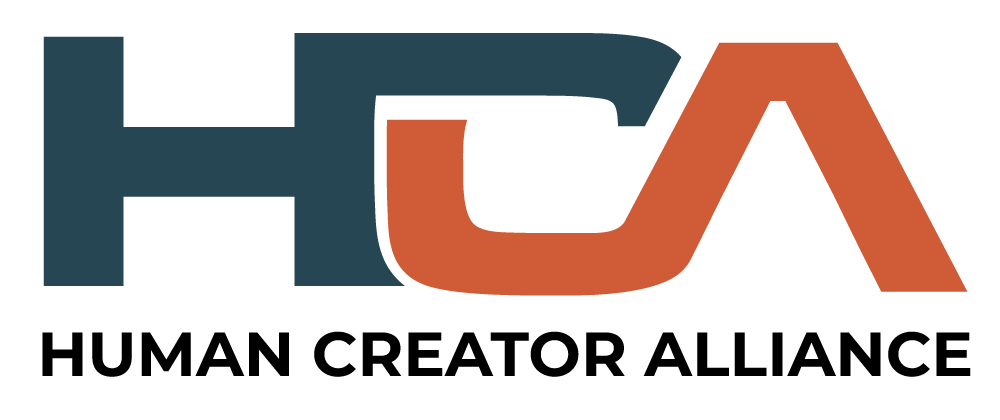Introducing the Human Creator Alliance
The Human Creator Alliance is empowering and enabling creators to thrive in the age of generative AI run amok.
Generative AI is breaking market forces in a way that devalues human creators: artists, writers, coders, designers, and everyone else who creates.
We’re here to fix this.
The Human Creator Alliance is a Public Benefit Corporation with a social mission to mitigate the disruptive effects that generative AI-created content is having on the world.
We think there is a better way, so we are creating a platform to change how economic market forces value generative AI-created content. We believe there is inherent and intrinsic value to human-created works like art, writing, and music, and we don’t want to live in a world that doesn’t feel the same way.
That’s why we have partnered with Credly, the leader in verified digital credentials, to create a series of certifications to bring back trust, transparency, and accountability to the marketplace and creative ecosystem. Now writers, artists, coders, and anyone else who creates can strengthen their brand against generative AI and proudly demonstrate that they are an Authentic Human Creator.
Creators can now show the world you follow our Ethical Standards towards generative AI. This is useful for:
Creators who want to show that they DO NOT USE generative AI in their works.
Creators who want to show that they RESPONSIBLY USE generative AI in their works.
What is Generative AI?
Generative AI is a type of Artificial Intelligence (AI) technology that can produce a variety of content, including text, graphics, audio, video, and many other forms of data and media. Examples include ChatGPT, Dall-E, and Bard. The rapid growth of generative AI is partially due to its easy-to-use interfaces, which are typically prompt-based and can nearly instantaneously create high-quality images, writing, video, music, and more.
Generative AI is causing widespread controversy and many experts identify several key risks.
The risk to jobs and the economy:
Generative AI can create human-like works, varying from literature, news articles, essays, scientific and research reports, artwork, designs, graphics, audio and video recordings, and anything else that can be created digitally. This is estimated to have a major impact on the job market. A recent research report published by Goldman Sachs predicts over 300 million jobs will be affected. And in an OpenAI (the creators of ChatGPT) research paper, they estimate that 80% of jobs will be impacted by AI.
The risk of misinformation:
As mentioned above, generative AI can create human-like works at scale, and can include misleading and fake news articles, papers, essays, audio, and video. The proliferation of misinformation in recent years due to social media is already a major problem in the world, but the ability to mass produce this misinformation at scale will only exacerbate this issue.
Widespread intellectual property infringement.
Generative AI platforms are trained on vast quantities of data scraped from the internet. This includes lots of copyrighted material, such as artwork, literature, and music. In turn, the elements of this copyrighted material are incorporated into the outputs produced by generative AI. This is problematic because it violates the Intellectual Property of the copyright holders, and it puts the user of the AI-generated output at potential legal risk. This has already resulted in the initiation of multiple high-profile lawsuits, including a class action motion.
